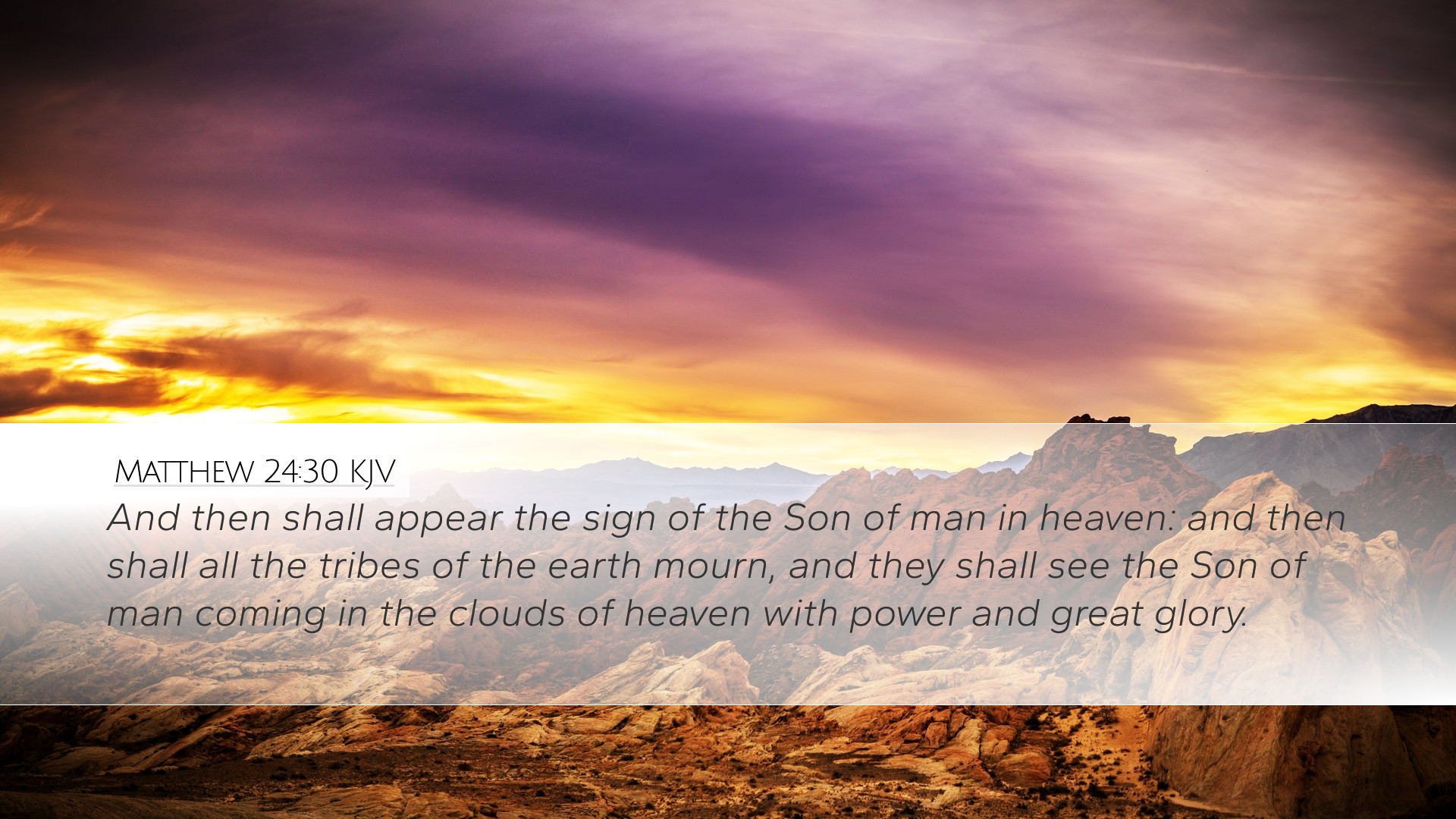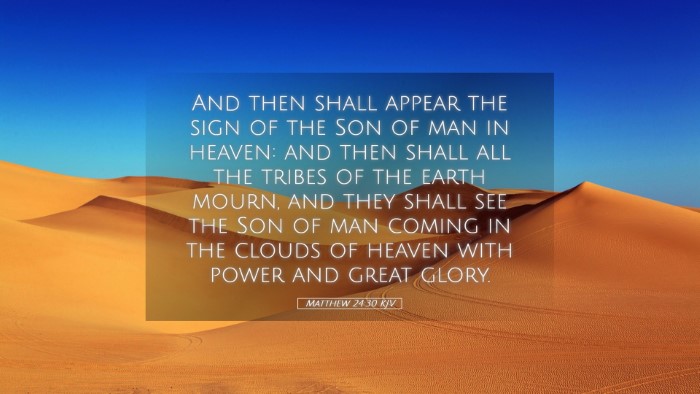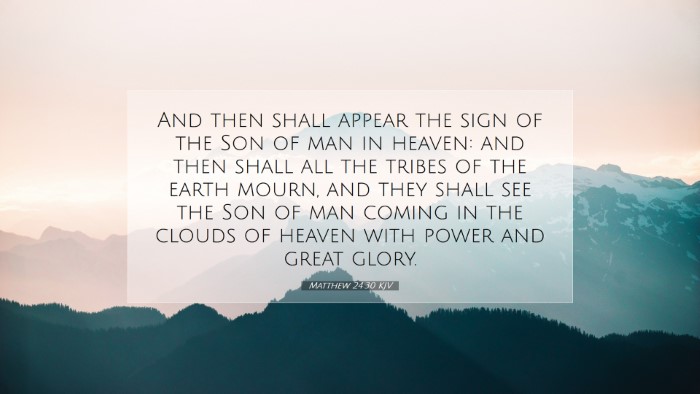Commentary on Matthew 24:30
Verse Text: "And then shall appear the sign of the Son of man in heaven: and then shall all the tribes of the earth mourn, and they shall see the Son of man coming in the clouds of heaven with power and great glory."
Meaning and Context
This verse is a part of Jesus' Olivet Discourse, in which He speaks about the end times and the signs preceding His second coming. Commentators like Matthew Henry highlight that this section focuses particularly on the assurance of Christ's ultimate triumph and the transformation of the universe at His return, which will be heralded by significant signs in heaven.
Sign of the Son of Man
Albert Barnes interprets "the sign of the Son of man" as a notable celestial event that will signify Christ’s return. It likely refers to the glorious manifestation of Christ Himself, distinct from previous events in history.
Theological Insight: This sign is fundamental as it marks a definitive moment in eschatology. The faithful will recognize it, reminding believers of the prophetic and redemptive work of Christ throughout history.
The Tribes of the Earth Mourn
The latter part of the verse indicates that "all the tribes of the earth" will mourn. Adam Clarke elaborates that this mourning signifies not just fear, but profound regret and sorrow for their sins and the rejection of Christ. This reaction is consistent with the notion of judgment and accountability.
- The mourning emphasizes the universal reach of Christ's authority—no one will escape His sovereign judgment.
- This reaction reflects a turning point for those who have rejected Him, awakening them to the realization of their choices.
Coming in the Clouds
The phrase "coming in the clouds of heaven" indicates a powerful and glorious return, a literal and visual spectacle. Matthew Henry stresses that the clouds symbolize divine presence and majesty, as seen in various biblical instances where God manifests His glory in clouds.
Symbolic Interpretation: Clouds in Scripture often denote divine presence and judgment, echoing God's sovereignty. This imagery evokes both awe and fear, signifying that Jesus’ return will affirm His holiness and righteousness.
Power and Great Glory
The culmination of this verse emphasizes Christ’s "power and great glory." According to Albert Barnes, this introduces the understanding of His divine authority being manifested at His return, a stark contrast to His humiliation during His first coming.
- His power denotes His ability to execute God’s will and enforce justice.
- The glory signifies recognition of His divinity and the honor that is rightfully His as the Son of God.
Application for Believers
This verse serves a dual purpose: it is a source of hope for believers awaiting Christ's return and a solemn reminder of the consequences of unrepentance. Matthew Henry urges believers to live in anticipation of this event, maintaining moral and spiritual vigilance.
For pastors and theologians, this passage invites profound reflections on eschatology, encouraging preaching that stresses both the imminent return of Christ and the need for repentance.
Conclusion
Matthew 24:30 encompasses significant themes of Christ’s authority, the response of humanity to divine revelation, and the glorious promise of His return. Engaging with this text through the lens of various commentators reveals a rich tapestry of meaning that encourages a faithful life in anticipation of Christ's imminent return.


